Best Toddler Formulas (2026 Guide)
This post may contain affiliate links. As an Amazon Associate, I earn from qualifying purchases. Please read my disclosure.When my kids turned one, I struggled with the decision on whether to keep them on formula or transition them to regular whole milk. Our pediatrician said that super picky eaters may benefit from toddler formula to fill nutritional gaps, and I knew a few of my friends’ kids were already on toddler formula. I spent weeks researching options, comparing European brands to US formulas, and trying to figure out if toddler formula was even necessary.
The short answer? Most toddlers don’t need formula after 12 months. But if your child is a selective eater, has growth concerns, or you want the peace of mind that comes with extra nutrients, toddler formula can be a helpful supplement.
My comprehensive guide will help you understand when toddler formula makes sense, what to look for, and which brands offer the cleanest, highest-quality options available in 2026!
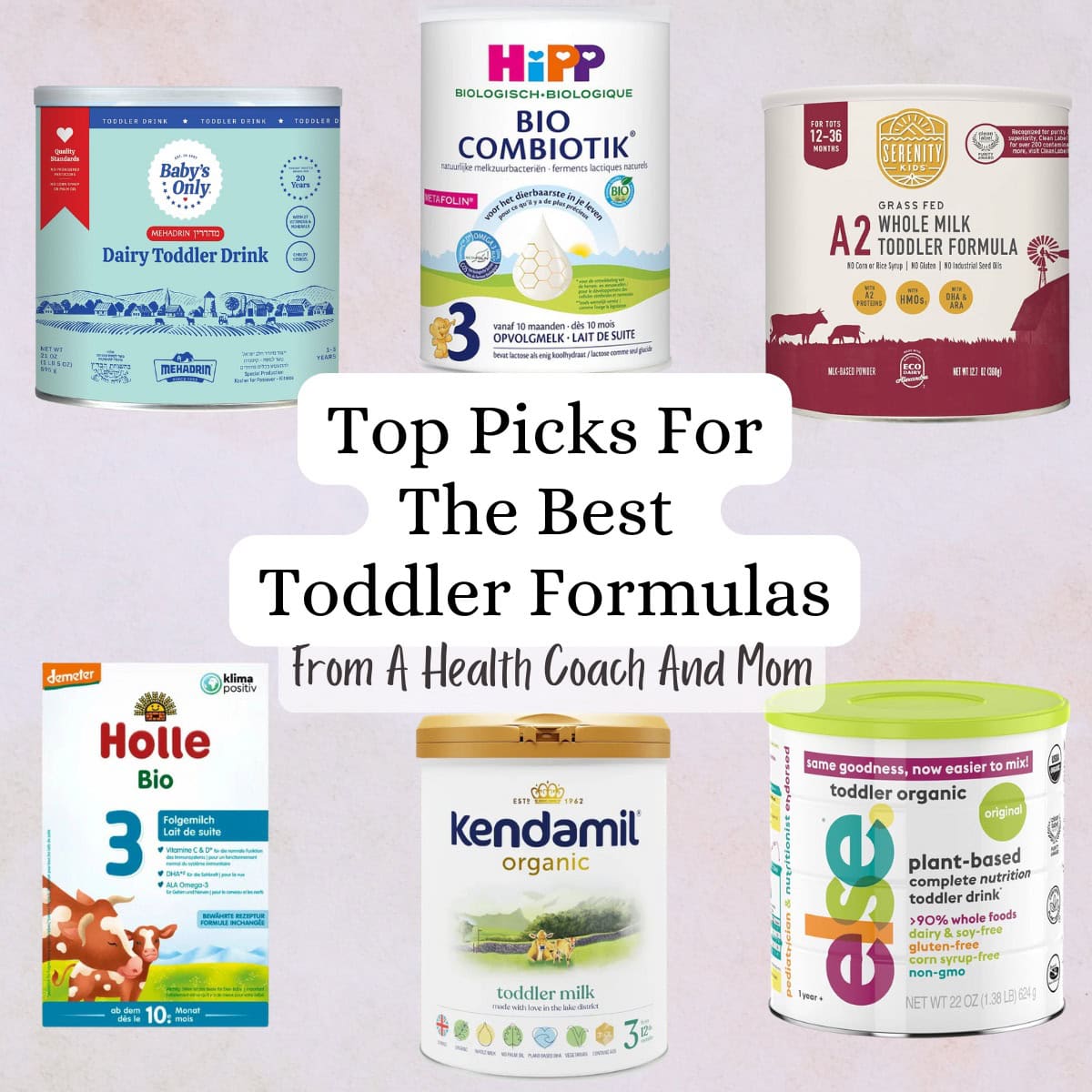
Top Picks: Best Toddler Formulas
Here’s my at-a-glance view of the best toddler formulas for different needs:
- Best Overall: Bubs Grass Fed Toddler Formula & HiPP Dutch Stage 3
- Best US-Made: Serenity Kids A2 Whole Milk
- Best Whole Milk (European): Kendamil Organic Stage 3
- Best Budget (US): Baby’s Only Organic Dairy with Whey
- Best Budget (European): Holle Bio Stage 3
- Best Goat Milk: Kendamil Goat Stage 3
- Best Plant-Based: Else Nutrition Toddler Formula
- Best For Sensitive Stomachs: Haven Oat Toddler Formula
- Best A2 Milk: Holle A2 Stage 3
Disclaimer & Methodology
I’m a board-certified health coach and nutritionist, but I’m not a medical doctor. This post is based on 100+ hours of research, consultations with pediatric experts, going through peer-reviewed studies, and personal experience with my own children, but it’s for informational purposes only and shouldn’t replace advice from your pediatrician. This post has also been medically reviewed and fact checked by Christina Badaracco, MPH, RDN, LDN (see my about page for more info about Christina).
Every child is different. Always consult your healthcare provider before starting or switching toddler formula, especially if your child has allergies, digestive issues, or special medical needs.
This post contains affiliate links, which means I may earn a small commission if you purchase through my links at no extra cost to you. I only recommend products I’ve researched, evaluated, and would feel comfortable giving to my own children.
What Is Toddler Formula?
Toddler formula (also called toddler milk, growing-up milk, or follow-on formula) is a powdered drink designed for children ages 12-36 months. It’s meant as a nutritional supplement, not a complete food source like infant formula.
Unlike infant formula, which is FDA-regulated and nutritionally complete, toddler formula isn’t federally regulated. This means brands can vary widely in quality, ingredients, and nutritional content. Some contain added sugars, corn syrup, and synthetic nutrients, while others offer clean, organic ingredients similar to what you’d find in high-quality infant formula.
Do Toddlers Actually Need Formula?
According to the American Academy of Pediatrics (AAP), most healthy toddlers don’t need toddler formula. The AAP recommends whole cow’s milk (16-24 ounces per day) plus a balanced diet of fruits, vegetables, whole grains, and protein.
When toddler formula might be recommended (consult your pediatrician before starting):
- Iron-deficiency anemia
- Growth or weight concerns
- Severe picky eating (refuses entire food groups)
- Medical conditions affecting nutrient absorption
- Developmental delays
- Transitioning from breastfeeding and child won’t drink cow’s milk
I considered using formula for my kids to fill nutritional gaps, but ultimately when they became less picky I just ended up using organic whole milk instead.
Toddler Formula Vs. Whole Milk
Whole milk provides calories, fat, protein, and minerals. Toddler formula provides these same nutrients plus added vitamins, DHA, probiotics, and other fortifications.
For most children eating a varied diet, whole milk is sufficient. But if your child isn’t getting enough iron, vitamin D, or other key nutrients from food, toddler formula can help bridge those gaps.
The AAP’s stance: There’s no evidence that toddler formula is nutritionally superior to whole milk for children eating a balanced diet. However, for selective eaters or children with specific nutritional needs, fortified toddler formula can be beneficial.
What To Look For In Toddler Formula
This is my go-to list when evaluating any toddler formula, and while no formula is perfect, all of the formulas on this list meet at least 80% of this criteria:
- Organic ingredients: Ensures no pesticides, GMOs, hormones, or synthetic chemicals
- No added sugars: Lactose should be the primary carbohydrate, avoid corn syrup, maltodextrin, syrup solids, etc.
- 60:40 whey-to-casein ratio: Mimics breast milk and aids digestion
- Grass-fed milk: Higher in omega-3 fats and natural DHA
- Prebiotics and probiotics: Support immune system and gut health
- DHA and ARA: Omega fatty acids for brain and eye development (ideally not hexane-extracted)
- Essential vitamins and minerals: Including vitamin D, iron, B vitamins, vitamins C, E, and A

Ingredients To Avoid In Toddler Formula
While all of these are non-negotiables for me, I always tell parents to just do their best when picking a formula, since ingredients like palm oil (while not ideal) are also hard to avoid in most formulas.
❌ Added sugars and syrup solids: Empty calories that contribute to poor eating habits, a cheaper carbohydrate source than lactose (lactose is my choice for a carbohydrate source in formula).
❌ Maltodextrin: Highly processed starch used as cheap filler.
❌ Hexane-extracted DHA/ARA: Extracted using neurotoxic solvents (though hexane is removed in final product). Cold-pressing or water-based extraction is what I’d prefer.
❌ Palm oil: Can cause digestive issues and harder stools in some toddlers.
❌ Soy protein: May cause hormonal issues with prolonged use (source).
❌ Carrageenan: Thickening agent linked to intestinal inflammation (banned in EU, still used in some US formulas).
❌ GMOs: Look for non-GMO or organic certification.
❌ Heavy metals: I recommend looking at the Clean Label Project and EWG databases for testing results if available.
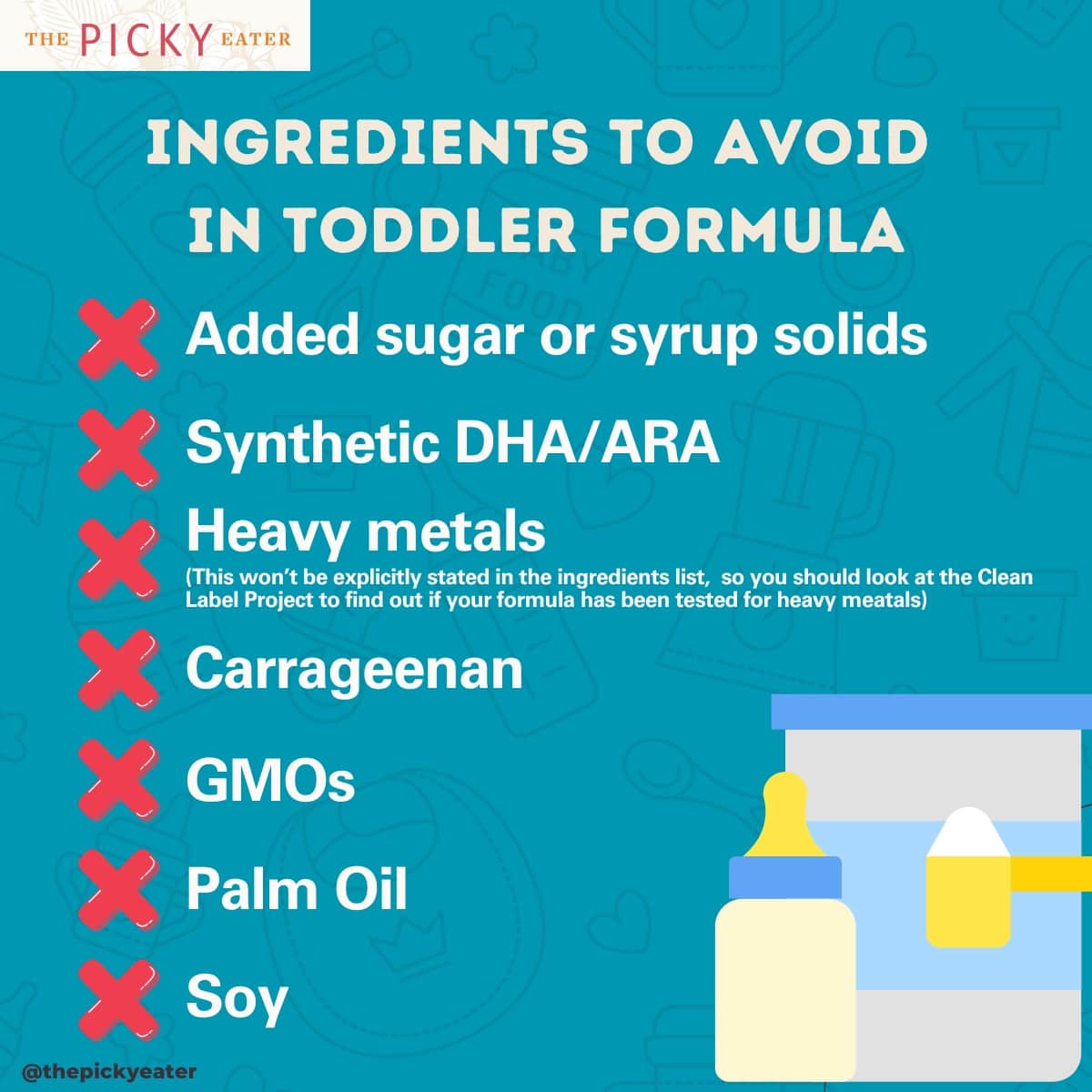
Best European & International Toddler Formulas
European formulas tend to be the best bet for clean and organic formulas because they are made according to the strict European Union regulations, though there are more and more quality American formula brands entering the market. For this reason, I am splitting this guide into the top European / International and US offerings currently available.
1. Bubs Grass-Fed Toddler Formula
Why I Love It: Bubs is an Australian brand that’s become popular in the US. Their grass-fed cow’s milk formula contains probiotics, prebiotics, DHA, ARA, and received the Clean Label Project Purity Award. I love that their cows spend 365 days on pasture! It’s also one of the few international formulas easily available at Target, Walmart, and Amazon.
Price: $28.49 for 567g
| Pros | Cons |
|---|---|
| Organic and non-GMO | More expensive than some US brands |
| Grass-fed milk from cows that pasture 365 days/year | |
| Contains probiotics and prebiotics | |
| Clean Label Purity Award | |
| No palm oil, maltodextrin, or sugar | |
| Affordable for an international formula | |
| Easy to find in US stores | |
| Contains DHA & ARA |
2. HiPP Dutch Stage 3 Combiotic
Why I Love It: HiPP Dutch and Bubs are my two two picks for toddler formula. HiPP Dutch is organic, non-GMO, and contains probiotics, prebiotics, DHA, iron, and essential vitamins without any added sugar or maltodextrin. The probiotics are similar to those found in breast milk, which helps support digestion.
I have recommended this to many parents and all of their kids have tolerated it well. It mixes easily and has a mild, slightly sweet taste that toddlers generally like.
Price: $49.99 for 800g (28.22oz)
Also Good:
- HiPP UK Stage 3 ($48.99 for 800g) – Very similar to HiPP Dutch but without probiotics
- HiPP Germany Stage 3 ($40.99 for 600g) – Similar to HiPP Dutch but contains starch
- HiPP Stage 4 (Kindermilch) ($40.99 for 600g) – Designed for 12-36 months; formulated for drinking from a cup instead of bottle; contains probiotics and lactic acid cultures
| Pros | Cons |
|---|---|
| Organic and non-GMO | DHA/ARA extracted using hexane (though no hexane is detectable in finished formula) |
| Contains probiotics and prebiotics | Contains palm oil (organic, sustainably sourced) |
| Contains DHA/ARA | More expensive than some US options |
| No sugar, corn syrup, or maltodextrin | Only available online |
| Free of pesticides, hormones, and preservatives |
3. Kendamil Organic Stage 3
Why I Love It: Kendamil is a British, family-owned company that makes formula with whole milk instead of skim milk plus vegetable oils. This means it’s naturally higher in milk fat and contains no palm oil or soy. It has plant-based DHA (not hexane-extracted), prebiotics, and follows strict EU standards.
Price: $52.99 for 800g (can buy in bulk for $49.99/can)
| Pros | Cons |
|---|---|
| Organic and non-GMO | No probiotics |
| Made with whole milk (not skim milk + oils) | Most expensive European option |
| Plant-based DHA (vegetarian-friendly) | Only available online |
| No palm oil, soy, sugar, or corn syrup | |
| No maltodextrin |
4. Holle Bio Stage 3
Why I love it: Holle is organic, Demeter certified, and one of the most affordable European formulas. It contains DHA from algae, probiotics, prebiotics, and essential vitamins for toddlers, while being free of added sugars (it does contain maltodextrin and starch, however).
Price: $34.99 for 600g
| Pros | Cons |
|---|---|
| Organic, Demeter certified, Bioland certified | Contains maltodextrin and starch |
| Affordable European option | No ARA |
| Contains DHA, probiotics, and prebiotics | Contains palm oil (sustainably sourced) |
| Vegetarian-friendly | |
| No sugar or corn syrup |
Best US-Made Toddler Formulas
Looking for a toddler formula that’s made in the United States? Below are my top recommendations.
1. Serenity Kids A2 Whole Milk Toddler Formula
Why I Love It: This is the best US-made toddler formula. It’s organic, uses easy-to-digest A2 whole cow’s milk, and contains three types of prebiotics (HMOs, GOS, FOS) plus DHA and ARA that aren’t hexane-extracted. It’s free from soy, gluten, GMOs, and synthetic folic acid.
Price: $45.99 for 360g
| Pros | Cons |
|---|---|
| Organic and non-GMO | Contains palm oil (sustainably sourced) |
| A2 whole milk (easier to digest) | Most expensive US option, small can size |
| Three types of prebiotics | |
| DHA/ARA not hexane-extracted | |
| Vegetarian-friendly | |
| No sugar, corn syrup, or soy |
2. Baby’s Only Organic Dairy With Whey
Why I Love It: This is the most affordable organic toddler formula in the US. It’s made with organic skim milk and whey protein, contains DHA and ARA (not hexane-extracted), and received the Clean Label Project Purity Award. It’s also FDA-regulated and meets infant formula nutritional requirements. I just don’t love that it has added sugar (in the form of brown rice syrup).
Price: $35.99 for 595g
| Pros | Cons |
|---|---|
| Organic and non-GMO | No probiotics or prebiotics |
| Clean Label Purity Award | Contains brown rice syrup |
| DHA/ARA not hexane-extracted | |
| No palm oil or soy | |
| Very affordable | |
| Vegetarian-friendly |
3. Haven Oat Toddler Formula
Why I Love It: This is the world’s first 100% oat toddler formula. It’s made with US-grown oat powder and Scandinavian oat protein, making it perfect for plant-based families or toddlers with dairy sensitivities. It contains dairy-free probiotics, prebiotics, DHA from marine algae, and lutein for eye health, all without palm oil, soy, fish oil, added sugar, or artificial ingredients.
Haven is FSANZ compliant (Food Standards Australia New Zealand), which is one of the most robust food regulatory agencies in the world. It’s nutritionally equivalent to their A2 cow and goat formulas, providing complete plant-based nutrition.
Price: Approximately $27.99 for 400g
| Pros | Cons |
|---|---|
| 100% plant-based and dairy-free | More expensive than most other options |
| Non-GMO | |
| Contains probiotics and prebiotics (dairy-free strains) | |
| DHA from marine algae (not fish oil) | |
| Lutein for eye health | |
| No palm oil, soy oil, or added sugar | |
| FSANZ compliant |
4. Else Nutrition Toddler Formula
Why I Love It: This is another great plant-based, vegan toddler formula. It’s made with an almond base (no soy or dairy), is organic, and received the Clean Label Purity Award. The new version contains added omega fatty acids. It’s perfect for toddlers with milk protein allergies or vegan families.
Price: $33.99 for 624g
| Pros | Cons |
|---|---|
| 100% vegan (including vitamin D) | Contains maltodextrin |
| Organic and non-GMO | Contains organic cane sugar |
| Clean Label Purity Award | |
| Clean Label Purity Award | |
| More affordable than most vegan options |
Best Goat Milk Toddler Formulas
Goat milk contains A2 protein (similar to human breast milk) and may be easier to digest for toddlers sensitive to cow’s milk.
For more about the pros and cons of goat milk vs. cow’s milk and the pros and cons of each, check out my post Is Goat Milk Formula Healthier than Cow’s Milk Formula?
1. Kendamil Goat Stage 3
Why I love it: Kendamil goat, while not organic, is still a really high quality goat milk formula for toddlers. It contains whole goat milk, plant-based DHA, prebiotics (including HMOs), and is free from palm oil, soy, sugar, and maltodextrin. The A2 protein makes it easier to digest than cow’s milk formulas.
Price: $62.99 for 800g (bulk pricing $59.99/can)
| Pros | Cons |
|---|---|
| Non-GMO | No probiotics |
| Whole A2 goat milk | Not organic |
| Plant-based DHA (not hexane-extracted) | Expensive |
| Contains prebiotics and HMOs | |
| No palm oil, soy, sugar, or maltodextrin | |
| Vegetarian-friendly |
2. Kabrita Goat Milk Toddler Formula
Why I Love It: Kabrita is made in the Netherlands with Dutch goat milk and is the only formula in the US certified glyphosate residue-free. It has a whey-to-casein ratio close to breast milk, contains prebiotics, and is free from sugar, maltodextrin, and palm oil.
Price: $42.99 for 800g
| Pros | Cons |
|---|---|
| Non-GMO (by EU standards) | Not organic |
| Made in Netherlands but also FDA regulated | No probiotics |
| Contains prebiotics | |
| DHA/ARA not hexane-extracted | |
| No sugar, corn syrup, or maltodextrin | |
| More affordable than Kendamil Goat |
3. Holle Goat Stage 3
Why I love it: This is the only 100% organic goat milk formula. It’s Demeter certified, contains plant-based DHA, and is free from palm oil, soy, and sugar.
Price: $33.99 for 400g
| Pros | Cons |
|---|---|
| Organic, Demeter certified, Bioland certified | Contains maltodextrin and starch |
| Made with full cream organic goat milk | No ARA, prebiotics, or probiotics |
| Plant-based DHA | Most expensive goat milk option per ounce |
| No palm oil, soy, or sugar |
Also Good:
- Bubs Goat Milk-Based Toddler Formula ($30.29 for 567g) – Non-GMO, made with fresh goat milk (not powder), contains A2 protein, DHA, ARA, and prebiotics; Clean Label Purity Award winner; most affordable goat milk option
- Holle A2 Milk Stage 3 ($32.99 for 400g) – Organic A2 cow’s milk (not goat), Demeter certified, easier to digest than regular A1 milk; contains DHA and ALA but no probiotics or prebiotics
Fun Ways To Use Toddler Formula
Since toddler formula is more of a “food” – I’ve found tons of creative ways to use it! Here are some of my favorite ways you can incorporate the nutrition from toddler formula into different recipes:
Oatmeal: Cook oatmeal in formula instead of milk for extra creaminess and nutrition. Top with berries, cinnamon, and bananas.
Smoothies: Blend ¼ of a banana with ½ cup of toddler formula and ¼ cup of your toddler’s favorite frozen fruit for a nutrient-packed snack
Mac And Cheese: Use formula in place of milk for added vitamins!
Popsicles: Make frozen treats by mixing formula with pureed fruit like in my banana popsicles!
When To Transition To Regular Milk
Most children don’t need formula past age 2. By this age, they should be getting adequate nutrition from a varied diet. If your child is a picky eater or has medical concerns, your pediatrician may recommend continuing longer.
Since both of my kids started eating more varied foods in early toddlerhood, we only supplemented with toddler formula a few times and they mainly drank organic whole milk.
FAQs
Most brands recommend 12-24 ounces per day, but always follow your pediatrician’s guidance. Remember that toddler formula is a supplement, most nutrition should come from solid foods including a variety of fruits, veggies, whole grains, protein, and healthy fats. Formula fills nutritional gaps but shouldn’t replace meals
No. The FDA only regulates infant formula (for babies under 12 months). This is why it’s so important to carefully research toddler formula brands and read ingredient labels.
No. Infant formula is nutritionally complete and designed to be a baby’s sole food source. Toddler formula is supplemental and assumes your child is eating solid foods for most of their nutrition.
It depends on the formula and your pediatrician’s recommendation. Some toddler formulas can replace the 16 ounces of milk the AAP recommends, while others are meant to supplement milk. Always consult your doctor.
The AAP says toddler formula isn’t necessary for most healthy children eating a balanced diet. However, pediatricians may recommend it for children with growth concerns, developmental delays, severe picky eating, or medical conditions.
Stage 3 is typically for 10-24 months, while Stage 4 is for 24+ months. Stage 4 formulas are designed to be drunk from a cup rather than a bottle and have adjusted nutrient profiles for older toddlers.
Final Thoughts
I hope this guide has helped you in choosing a toddler formula! Whether you choose European formulas like HiPP or Kendamil, US-made options like Serenity Kids or Baby’s Only, or plant-based alternatives like Else, there are clean, organic options available to fit almost any budget and preference.
The most important thing is ensuring your toddler is growing well, eating as varied a diet as possible, and getting regular check-ups with their pediatrician.
For more guides, baby and kids’ product reviews, tips, and tricks, check out the Best for Kids section of my blog. Also, if there is a fabulous toddler formula that I missed, please be sure to let me know in the comments! And if you have any questions, please don’t hesitate to leave a comment or send me a message. I respond to every question I receive!



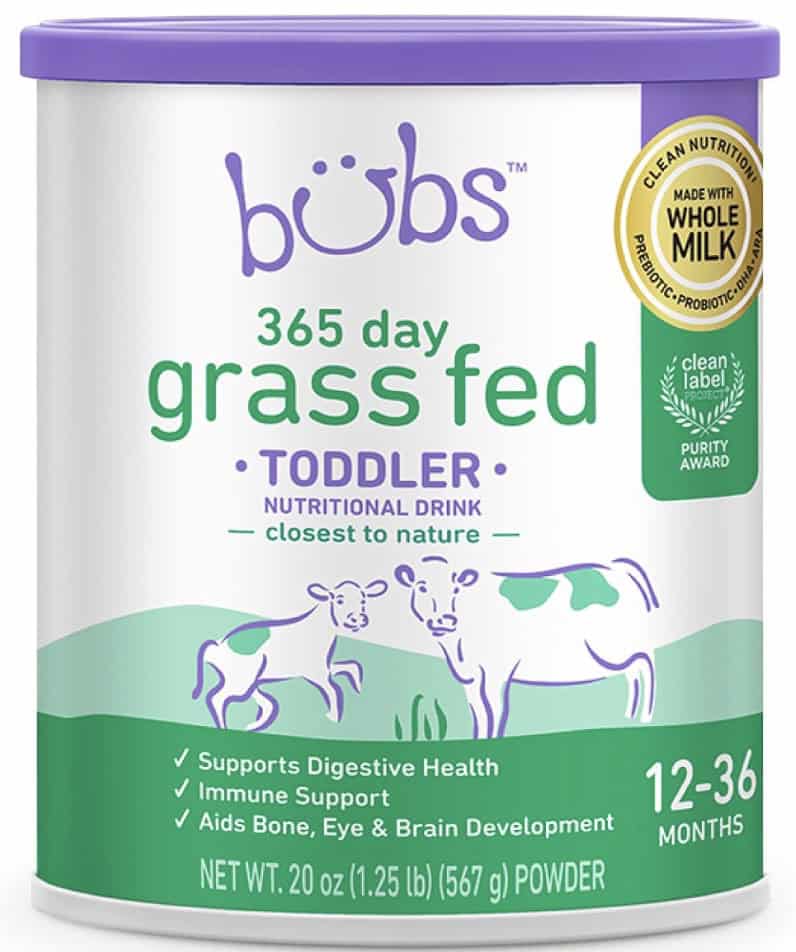

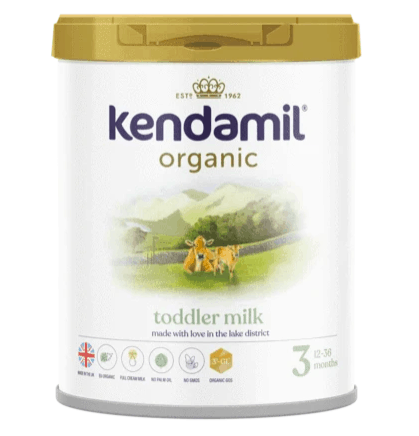

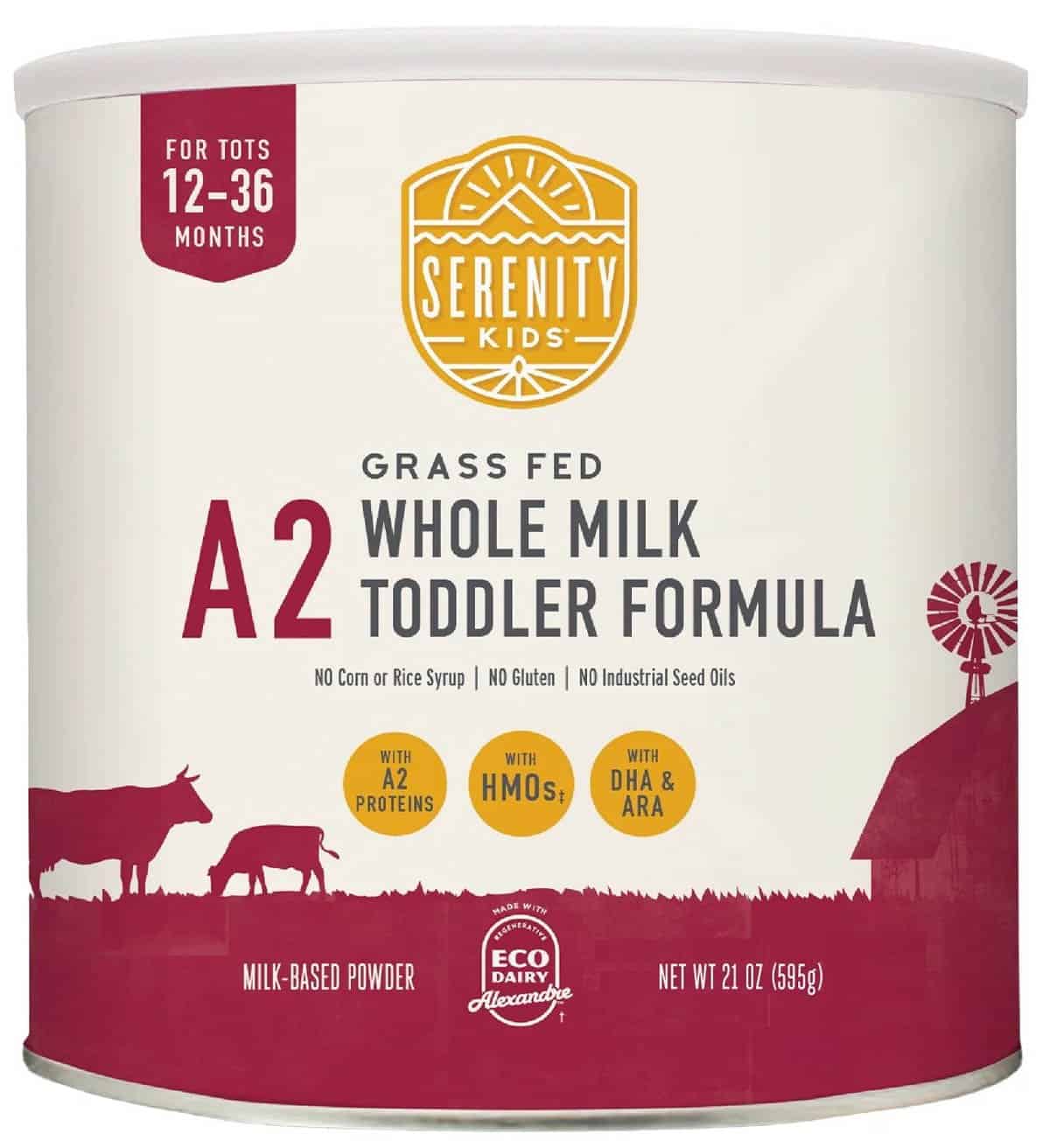


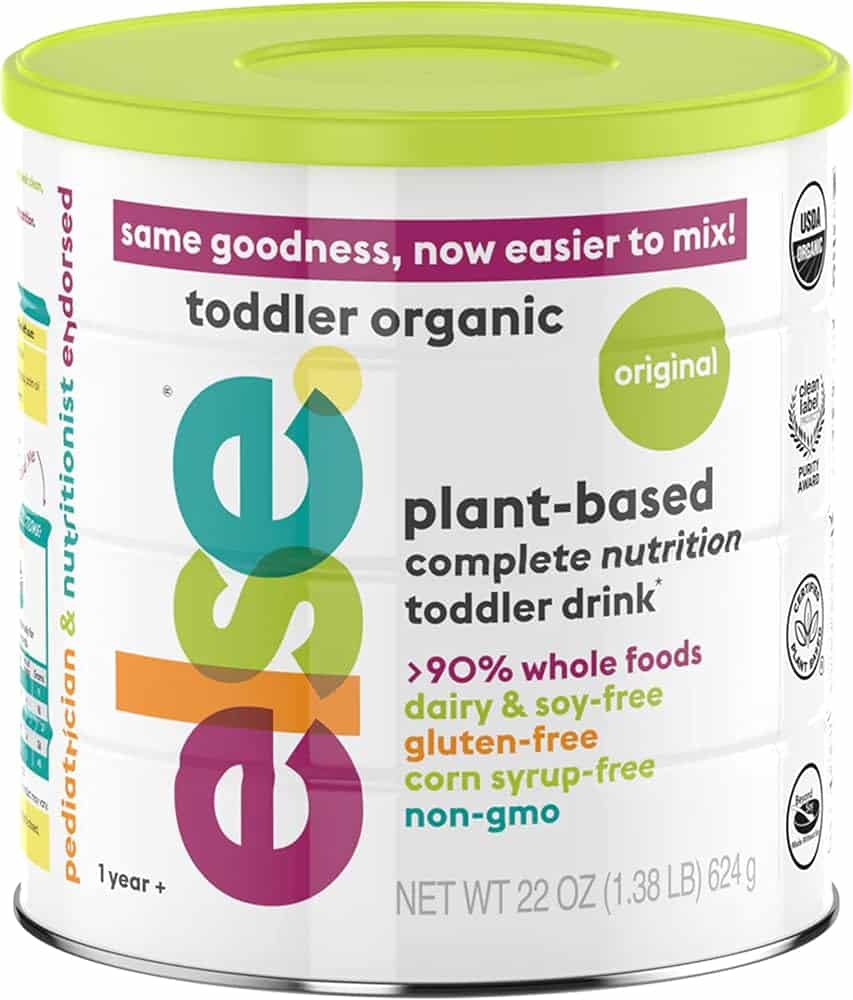
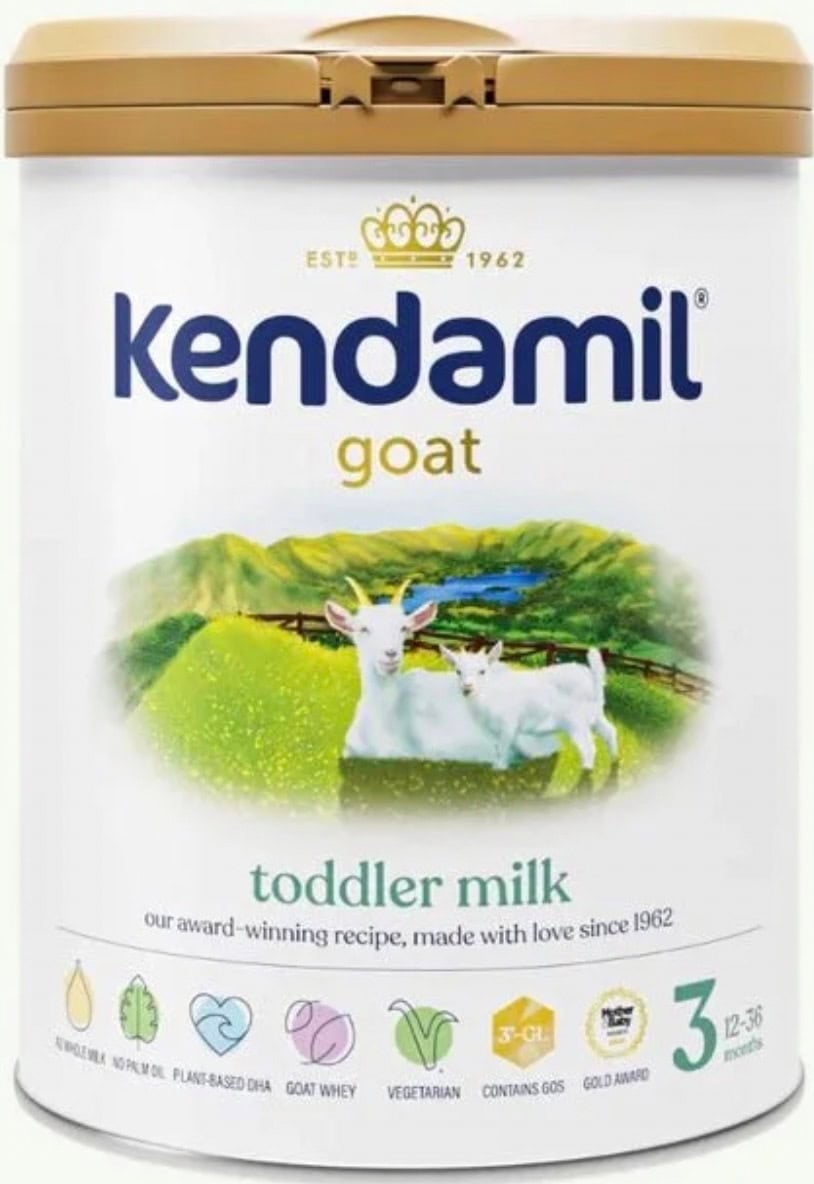
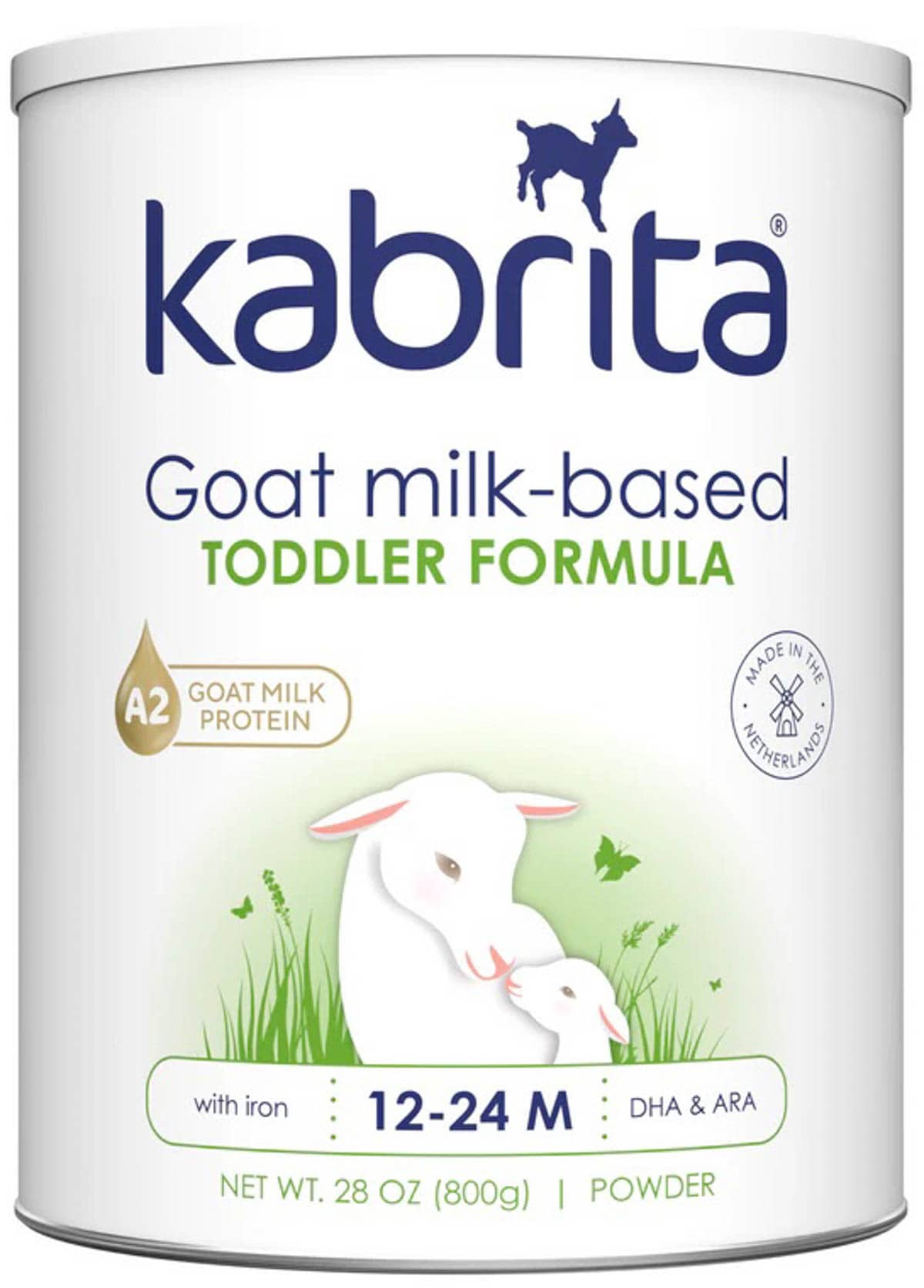

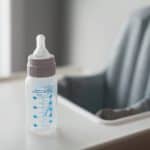
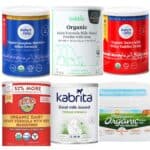


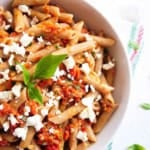
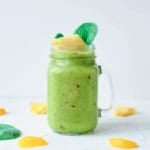



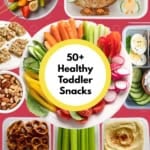
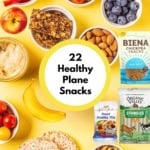

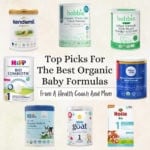



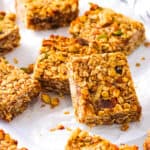

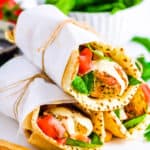
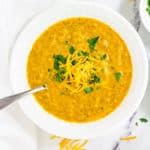
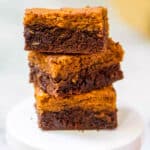
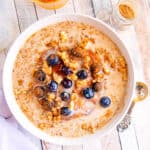



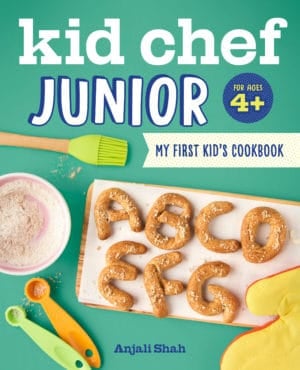



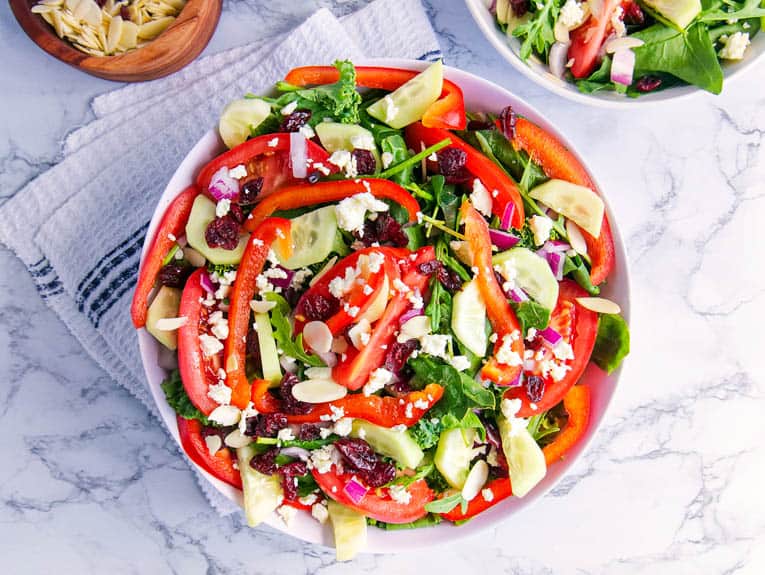



Out of curiosity- if Aussie Bub didn’t have any ‘cons’ why did you rate it #4? Trying to decide what formula to buy for my toddler at the moment and was curious for rating?
Hi Laney! My main reason for ranking it #4 is because it’s not organic, while the formulas in position #1-3 are. It is non-GMO and has some organic ingredients, but because it’s not 100% organic I didn’t rank it higher. Hope that helps clarify!
Hi! This is so helpful. My 13 months old is a very picky eater so I’m still giving her formula to make sure she’s getting nutrients. If infant formula is a complete source of nutrition, what about staying with infant formula after 12 months rather than switching to toddler?
Hi Kim! So glad you found this helpful! To your question – typically infant formula is a complete source of the nutritional needs for infants, not toddlers. Toddlers have different nutritional needs than infants (which is why there are different toddler formulas, and also why many toddlers don’t need formula after 12 months of age and can switch to regular milk instead). I would ask your pediatrician whether they think you should stick with infant formula, move to toddler formula, or just start on regular organic whole milk now that your daughter is 13 months old! Hope that helps!
Have you heard of growth spurt premium toddler formula goat milk or kabrita junior? What do you think? Especially compared with the other 2+ year olds formulas?
Hi Jennifer! Kabrita Junior is a great option for kids aged 2+ — it’s got the same high quality ingredients as Kabrita’s Toddler Formula, but with some added protein and other nutrients for older kids. You can even mix Kabrita Junior into mini meals like oatmeal, pancakes, etc! I hadn’t heard of growth spurt premium toddler formula – but when I looked it up the ingredients looked pretty good – I like that they have no sugar or syrup solids added and that they’re non GMO! I just don’t know if they follow organic practices for their goats and goat milk, compared to Kabrita who does, and some of the other formulas on this list that are already organic. Hope that helps!
Thank you so much for this!
Can you please share what you think of Earth’s Best Toddler milk? Is there a reason you didn’t rate it too? Thanks a million!
Hi Gabriella! Great question! I didn’t rate it because there are so many better options out there (which do appear on my list), but for comprehensiveness purposes, I decided to add it to my list! I ranked it #4 under the other 3 US toddler formula options. The main drawback to Earth’s Best compared to some of the other US brands is that it contains added sugar (in the form of cane sugar) and it also contains maltodextrin, so it’s a less ideal option. That said it is organic and is more affordable so there are benefits to it as a formula option as well!
Hi Anjali-
One last question. Thank you so much for helping me along this journey. How is Meyenburg Goat Milk? The organic grocery store near me sells it and our pediatrician said it would be okay to use. My daughter tried it and she seems to really like the taste. We did go ahead and purchase Kendamil Goat stage 3 to have on hand as well and I don’t mind using that for 1-2 drinks a day. Just wondering your thoughts on Meyenburg Goat Milk. Thank you!
Hi Alex! It looks like a fine brand of regular goat milk – the only thing to keep in mind is that it doesn’t look like Meyenburg Goat Milk is organic (although they do say that they don’t use any antibiotics/hormones/steroids, which is good). So I would say, if you can find an organic goat milk at your grocery store, go with that, otherwise I think if your daughter is over the age of 1, you could certainly just use regular goat milk instead of cow’s milk or formula at this point (as long as your pediatrician agrees!) Hope that helps!
Hi! You have been so helpful this past year as I navigate breastfeeding and formula feeding for my daughter. Thank you! She just turned 1 and we use Kendamil goat stage 1. It has been great. I wanted to switch her to unsweetened Ripple milk but it is really hard to find. So I am thinking of keeping her on powdered formula for a few more months; unless you have another suggestion. I am open! I would probably move her to Kendamil Goat stage 3. But the ease of buying milk in the grocery store is nice. I just don’t want cows milk. Thanks!!
Hi Alex! Thanks so much for your kind words! I’m so glad my blog has been helpful for you! To your question – you could totally use Kendamil Goat Stage 3 as that’s meant for toddlers. Alternatively, if your pediatrician is ok with it, you could just buy regular organic goat milk from the grocery store to give to her! Ripple unsweetened is also a decent option, it’s just not organic. Another option would be to use organic unsweetened almond milk and mix it with Tejari protein powder for kids to give the almond milk a protein boost. Hope that helps!
Thank you so much! This is very helpful information!
No problem at all!